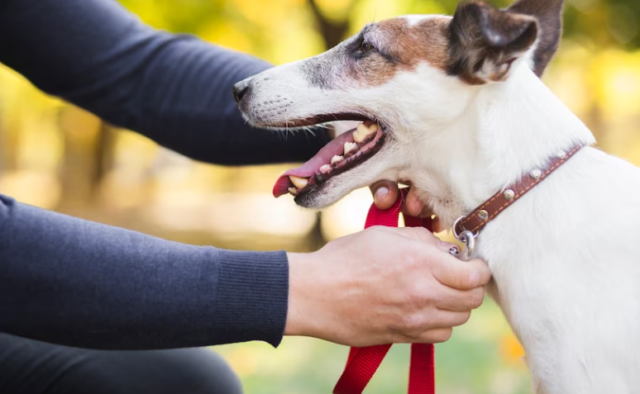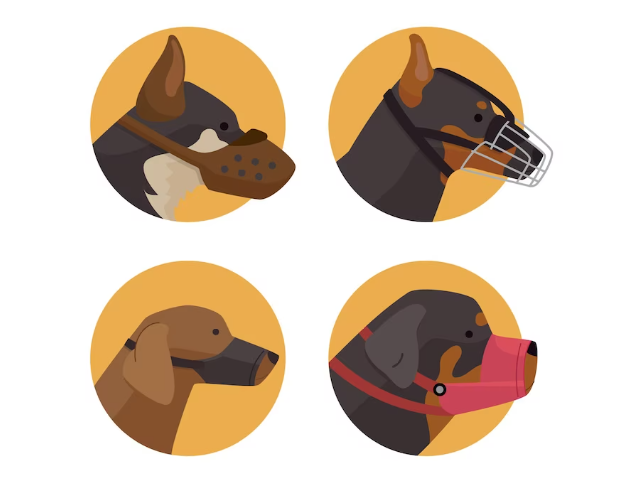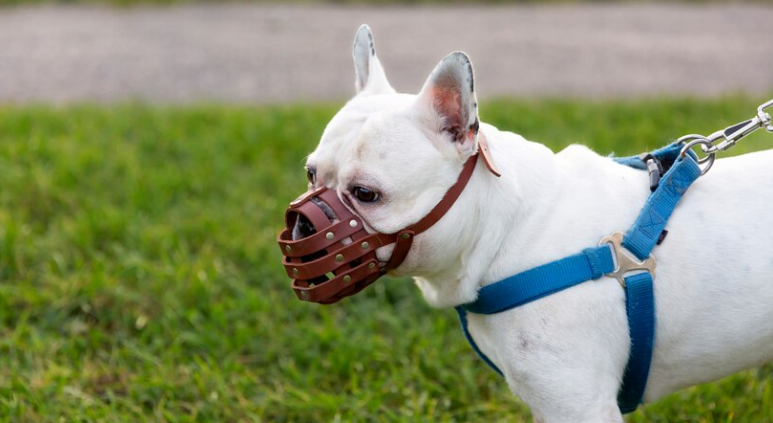As responsible pet owners, we owe it to our four-legged companions who are often regarded as man’s best friend to always keep them safe and secure. Using leashes and dog collars is one approach to guarantee their protection. Each owner of a dog needs these two complementary accessories since they are indispensable.
Types of Dog Collars
-
Flat Collars – These are the most popular collars and are excellent for daily use. They are available in a variety of styles, colors, and materials, including cotton, leather, and nylon.
-
Martingale Collars – Canines with narrow heads, like greyhounds and whippets, are best suited for these collars. They tighten when the dog pulls to stop the dog from sliding out of the collar.
-
Choke Chains: Often referred to as slip collars, these collars are mostly utilized for training. If not utilized appropriately, they can hurt and discomfort dogs when they tighten around their necks when pulled.
-
Metal prongs on these collars dig into the dog’s neck as it is pulled. It is not advised that novice dog owners use them since doing so might result in significant damage.
-
Head Collars: By fitting over the dog’s head and muzzle, these collars provide the owner additional control over the pet’s movements. They are advised for dogs that are challenging to manage on a leash.

Types of Dog Leashes
-
Standard Leash – This is the most common leash type, and it comes in different materials and lengths. They are perfect for everyday walks and are suitable for dogs of all sizes.
-
Retractable Leash – These leashes have a retractable cord that can be adjusted to different lengths, giving the dog more freedom to roam. However, they are not suitable for dogs that tend to pull as they can cause injuries and accidents.
-
Chain Leash – These leashes are made of metal chains and are recommended for large and strong dogs that tend to pull. They are strong and durable, but they can be heavy and uncomfortable to handle.
-
Martingale Leash – This type of leash combines the features of a standard leash and a martingale collar. They are perfect for dogs that tend to slip out of their collars.
-
Slip Lead – This type of leash is designed as a combination collar and leash. They are perfect for training and are commonly used by dog trainers and handlers.
Factors to Consider When Choosing a Collar and Leash
-
Dog’s size and breed – The kind of collar and leash that will work for your dog will depend on its size and breed. A huge, powerful dog, for example, will need a robust collar and leash that can support its weight and strength.
-
What are your intentions for using the collar and leash? Is it intended for daily usage, exercise, or walking? Understanding the intended use will aid in selecting the proper collar and leash for your dog.
-
Material and durability – The collar’s and leash’s construction material should also be taken into account. Choose a collar and leash that are constructed of a strong, long-lasting material that can tolerate wear and tear.
-
When selecting a collar and leash for your dog, comfort and safety should come first. Check to see that the collar is the right size and neither too tight nor too loose. Moreover, holding the leash should be pleasant and pain-free.
How to Properly Use a Dog Collar and Leash
It’s crucial to understand how to utilize the collar and leash you’ve picked for your dog now that you have them. The following advice will assist you:
-
Fitting the collar – The collar should be snug but not too tight. You should be able to fit two fingers between the collar and your dog’s neck.
-
Attaching the leash – The leash should be attached to the collar’s D-ring. Make sure it’s secure and not too loose.
-
Proper handling techniques – When handling the leash, hold it firmly but not too tightly. Avoid jerking the leash or pulling your dog too hard.
-
Safety tips – Always keep your dog on a leash when in public places to prevent them from running off. Also, avoid leaving your dog unattended with its collar and leash on to prevent accidents.
Conclusion
For each dog owner, collars and leashes are necessary accessories. Your dog will be secure and comfortable if you choose the proper collar and leash for them. To avoid mishaps and injuries, use them correctly at all times and abide by the safety instructions. You’ll be sure to share a lot of joyful and special moments with your furry pet if you take good care of them.

FAQs
How many distinct styles of dog collars and leashes are there?
A variety of collar and leash styles, including flat collars, martingale collars, choke chains, harnesses, and retractable leashes, are offered.
Can I give my puppy a collar and leash?
A: You may give your dog a collar and leash, yes. Yet, it’s crucial to pick a collar and leash that are suitable for their size and age.
How frequently should I change the collar and leash on my dog?
A: If the collar and leash on your dog start to seem worn out or damaged, you should replace them.
How do I clean the collar and leash on my dog?
A: You may wash the collar and leash of your dog with some mild soap and water. Bleach or other strong chemicals should not be used since they can harm the material.
Can I always keep my dog’s collar and leash on?
A: No, keeping your dog’s collar and leash on at all times is not advised. This might be hazardous and lead to mishaps or injuries.


